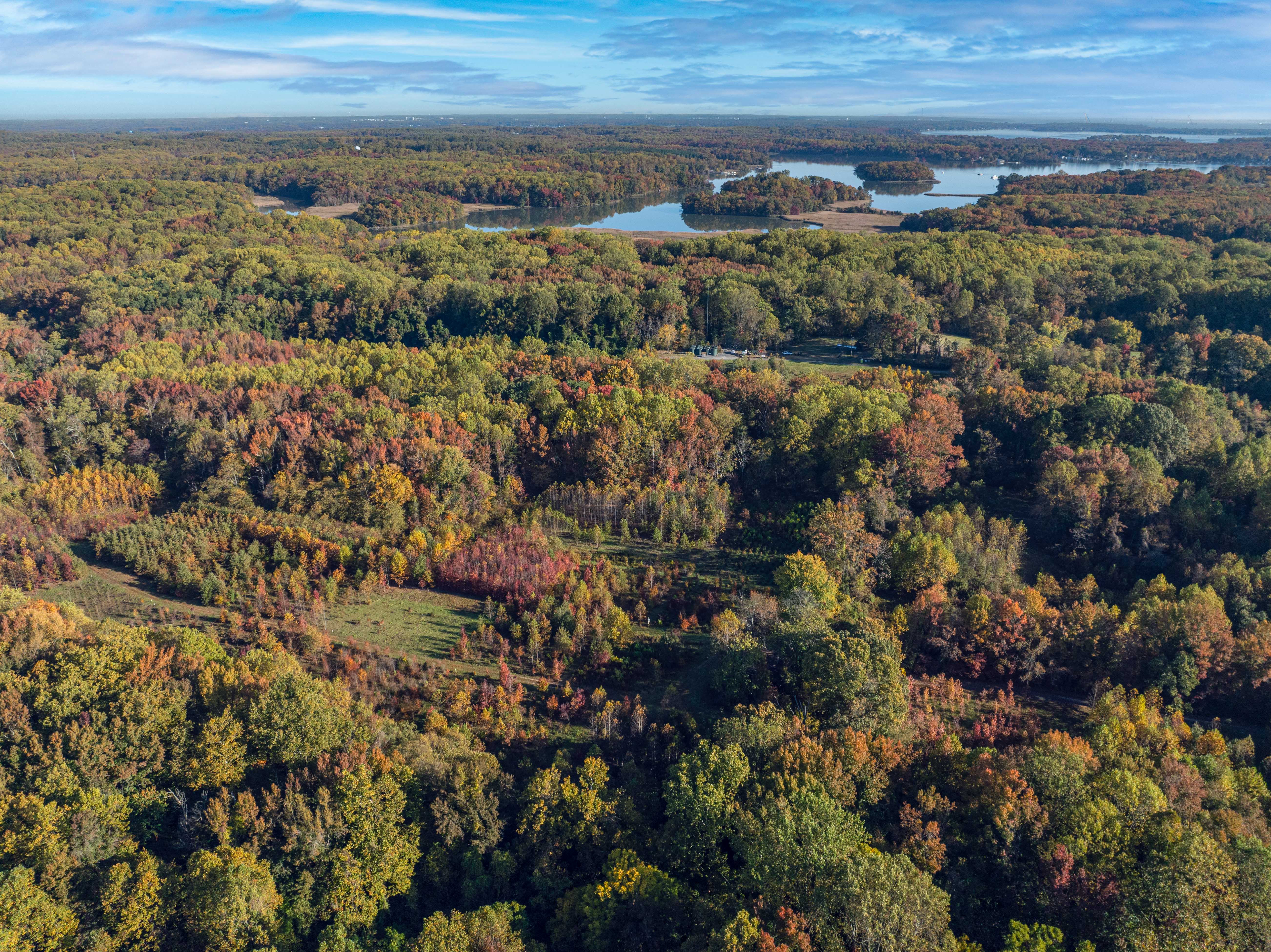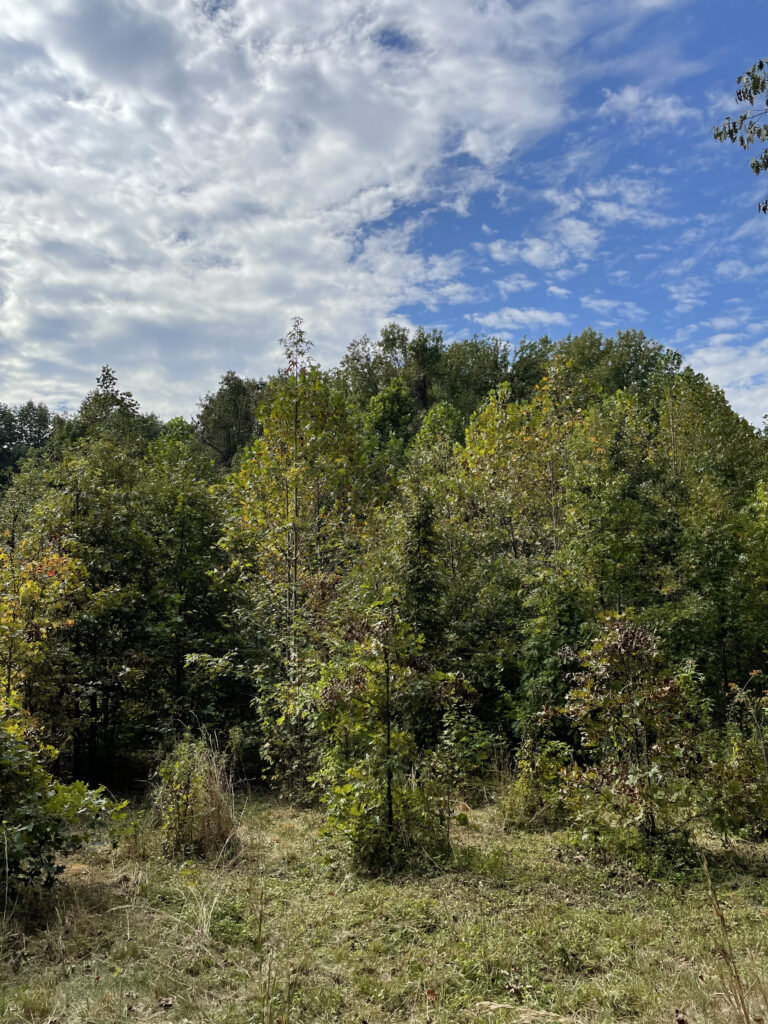by Erin Minor

Forests play a vital role in absorbing carbon dioxide from the atmosphere. Worldwide, roughly 10 million hectares of forest are lost to deforestation each year. Forest restorations—efforts to regrow forests—offset around half of that. But how do we make sure that these efforts are as efficient as possible? One answer is in planting a wide variety of tree species.
A new study from the Smithsonian Environmental Research Center (SERC) has found that forests planted with multiple tree species are more efficient than those with just one.
Often, a single reforestation will plant just one tree species. But forests in nature don’t look like that. And these “monocultures” can have negative effects on the ecosystem as a whole. Other plant and animal species that fit into different ecological niches might not have their needs met there. Monocultures can also make forests more vulnerable to pests and disease. A more diverse forest can protect them from that.
However, forest diversity is good for more than just supporting lots of animals and insects. As the new study showed, a variety of tree species creates a canopy above that is similarly varied. This in turn makes the forest grow faster.
“When trees grow faster, they take up more carbon from the atmosphere, which is important for global efforts to mitigate the impacts of climate change,” said Catherine Fahey, a postdoctoral fellow at SERC who led the study.
Two forests, one discovery


Left: Catherine Fahey inspects a tree in the BiodiversiTREE forest experiment in Virginia. (Credit: Jamie Pullen) Right: Jamie Pullen measures a tree in the BiodiversiTREE experiment at SERC in Maryland. (Credit: Stephen Voss, Smithsonian)
Fahey works in BiodiversiTREE, a forest restoration experiment at SERC’s campus in Edgewater, Maryland. The experiment is investigating whether tree diversity can help reforestation efforts. Twelve years ago, scientists and volunteers led by John Parker planted more than 17,000 trees on 60 acres of land. Parker had divided the experiment into plots with one, four or 12 tree species. The project is unique for its large scale and long-term commitment.
“What we want to know is, when you plant new forests, what is the best way to do that and get the most benefits from it?” said Jamie Pullen, head technician of the Terrestrial Ecology Lab at SERC. “And what we’ve seen from this study is that planting diverse forests is the best way.”
“Trees can be hard to study because they live such long lives. A two-year experiment is not going to give you the full answer,” said Parker. “There are only three experiments of this scale in North America, and two of them are Smithsonian sites.”
The other Smithsonian site is 100 miles away in Front Royal, Virginia. It lives at the Smithsonian Conservation Biology Institute (SCBI), part of the National Zoo. The new study included data from both forests. Planted just a year later, SCBI’s inland forest has a different variety of native trees than those in the coastal forest at SERC. But it still showed the same results.
“It’s very rare that two separate areas of research are able to align for a project like this,” said William McShea, a wildlife ecologist at SCBI who oversees their BiodiversiTREE plots. “So it’s unique to be able to collaborate in this way that has turned out to be very productive,”
Peeking through the canopy

It can be hard to quantify the canopy of a forest. From the ground, it’s difficult to see through all the layers of branches. In this study, scientists measured the complexity of the forest canopy using lasers—specifically, LiDAR data collected by the National Ecological Observatory Network (NEON). With LiDAR, scientists fly a plane or drone overhead and use laser beams to map out the topography of a landscape. In this case, it recreated digital models of the tree canopy.
The researchers discovered that having a variety of tree species created a more complex forest canopy. The differing heights and shapes allowed branches from different trees to fit together like puzzle pieces.
“If each tree canopy has a different shape, they can fit more closely together and take in more sunlight, allowing the whole area to use that light more efficiently,” said Fahey.
This makes a huge difference for climate mitigation efforts. Trees require carbon dioxide to grow: The faster they grow, the more carbon they need to take in to aid that growth process. Knowing that biodiverse forests grow faster, and therefore absorb more carbon, means that climate-minded managers can prioritize biodiversity when replanting forests.
But this study could also give industries like forestry and logging a better reason to plant diverse forests. Many of their plots are currently monocultures—it is much easier to harvest entire plots when they are all the same species and ready to be logged at the same time. But if scientists can make the case that biodiverse forests grow faster than monocultures, the industry might be open to making biodiversity a priority.
“When people are replanting for conservation purposes, they do largely agree with that priority and tend to plant diversely,” Pullen said. “But it’s harder to convince people who are planting for timber, because having a variety of trees makes harvesting more difficult.”
With new evidence that biodiverse forests are more productive, it could turn over a new leaf for logging as well as conservation.
Watch: 2-minute aerial tour of BiodiversiTREE at the Smithsonian Environmental Research Center
A link to the original study, “Canopy complexity drives positive effects of tree diversity on productivity in two tree diversity experiments,” is available at https://esajournals.onlinelibrary.wiley.com/doi/10.1002/ecy.4500
Learn more:
BiodiversiTREE: The Hundred-Year Forest Experiment
BiodiversiTREE: North America’s Largest Tree Diversity Experiment Turns 10
How Clay Caterpillars Help Unlock Biodiversity’s Secrets

